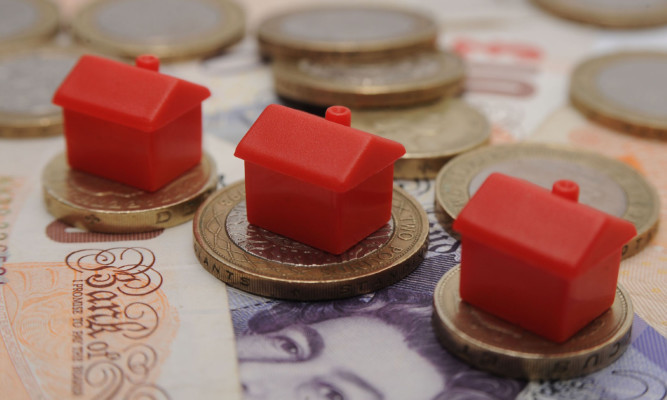Scottish property prices in February rose at their fastest rate since the 2007 housing boom as high-end buyers completed purchases to beat new tax rates, a report has found.
The average house price north of the border rose 1.7% to a new record high of £169,742, according to the Your Move/Acadata House Price Index.
On an annual basis, prices rose 6% in the year to February, the strongest rise since August 2010.
Housing experts said the rise was driven by high-end buyers trying to complete expensive purchases under the old stamp duty rates ahead of the introduction of the new land and buildings transaction tax (LBTT) in April.
Fifteen properties priced at £1 million or more were sold in Scotland in February, compared to six the previous month.
They included one of the outskirts of Edinburgh which sold for just under £3.7 million, the most expensive house to be purchased in Scotland since July 2011.
Christine Campbell, regional managing director of Your Move, said: “Tactical tax considerations have helped foster price growth in the Scottish housing market and are likely to play a significant role in the months to come too.
“Now that the LBTT has come into force, we expect to see a temporary drop-off in the number of properties sold above £750,000, now liable for the top rate of tax – similar to the impact we’re currently seeing in London among £2 million properties in light of December’s stamp duty changes.
“Typically in the housing market cycle, we would expect home sales to ease back in February, in the aftermath of the costly Christmas period.
“This February moved against the seasonal grain, with completed home sales up 14% on January levels – however, activity is still 4% down on last year.”
John Tindale, senior housing analyst for Acadata, agreed that the rapid rise in prices in February was tax related.
He said: “In February 2015 there were 15 properties sold in excess of £1 million, which compares to only 6 in January 2015 or an average of 11.6 properties per month in 2014.
“Thus, we can conclude that February’s ‘average’ house price has been somewhat artificially inflated by tax timing considerations, as opposed to underlying changes in the state of the housing market.
“A similar sentiment is likely to apply to the March and April figures when published, with March seeing further increases in average prices, while an expected lack of high-value properties changing hands in April is likely to cause prices to fall.”
He anticipates a “considerable reduction” in the number of properties selling for more than £750,000, the threshold level for the top rate of tax, for the rest of the year.
On an annual basis, house prices rose in 28 of the 32 local authority areas, with Argyll and Bute experiencing a 17.4% increase, the highest on the mainland.
The Shetland Islands saw the highest yearly rise in Scotland, with a 26.9% increase.
Aberdeenshire, the Shetland Islands, Edinburgh City, Aberdeen City, East Lothian and Angus all experienced peak prices in February.
Edinburgh topped the table with an average house price of £248,791, the report found.
